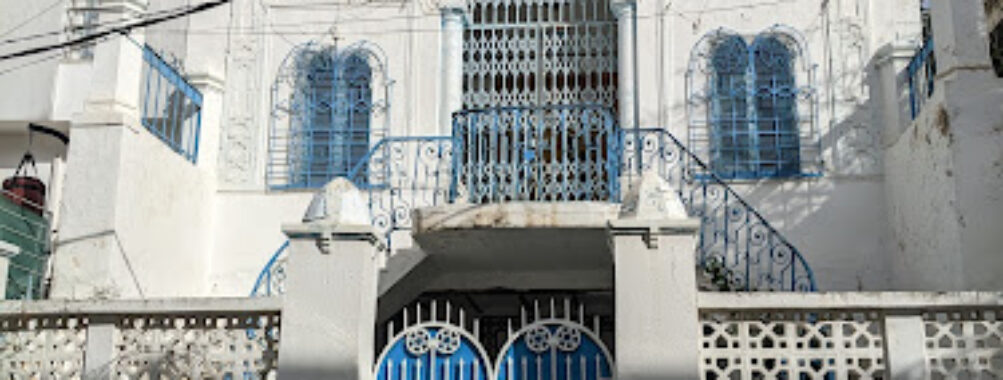
Keren Yeshua Synagogue
Table of Contents
Description
The Keren Yeshua Synagogue stands as a quietly powerful testament to history and faith, a place where time seems to slow down just enough for you to soak in the weight of centuries. It’s not just a building; it’s a living narrative of a community’s resilience and spiritual devotion. Walking inside, you might catch yourself pausing, caught off guard by the stillness that contrasts sharply with the hustle outside its doors. It’s a spot that invites reflection, whether you’re deeply familiar with Jewish traditions or just curious about the stories etched into its walls.
Now, don’t expect it to be flashy or overly ornate like some synagogues you might have seen in travel brochures. Keren Yeshua keeps things humble, almost understated, which somehow makes it even more intriguing. The architecture carries subtle hints of its historical roots, with details that whisper rather than shout. And that quiet charm is exactly why visitors often find themselves lingering longer than planned, drawn to the peaceful atmosphere that seems to seep from every corner.
What’s really striking about this synagogue is how it manages to balance being a place of worship with being a historical landmark. You get a sense that it’s still very much alive, serving the local community while welcoming travelers who want to connect with a piece of history. It’s a rare blend, and honestly, that’s what makes it stand out among other religious sites. You don’t just see history here – you feel it.
For those who appreciate authenticity, the Keren Yeshua Synagogue offers a genuine experience. It’s not polished for tourists, which means you get the real deal—the kind of visit that sticks with you. Whether you’re a history buff, a spiritual seeker, or just someone looking to explore a unique cultural site, this synagogue quietly promises a memorable stop on your journey.
Key Features
- Historical architecture with authentic design elements reflecting its cultural heritage
- Active place of worship, offering a glimpse into ongoing religious traditions
- Peaceful, contemplative atmosphere perfect for reflection and quiet moments
- Modest size, making it easy to explore without feeling overwhelmed
- Rich storytelling potential through its walls and artifacts, connecting visitors to the past
- Located in a culturally significant area, enhancing the overall experience
- Welcoming to visitors who are respectful of its spiritual significance
Best Time to Visit
Timing your visit to the Keren Yeshua Synagogue can make a big difference in what you experience. If you’re aiming for a more intimate, personal encounter, weekdays tend to be quieter. Early mornings or late afternoons are especially good for avoiding crowds and soaking up the serene vibe. Weekends might be busier, especially during religious holidays or special events, which can be fascinating but also a bit more hectic.
Weather-wise, mild seasons are your best bet. Avoid the peak heat of summer if you can, unless you’re a fan of sweating through your history tours (been there, done that, not my favorite). Spring and autumn offer pleasant temperatures that make wandering around the surrounding neighborhood just as enjoyable as the synagogue itself. Plus, the light during these times tends to be softer, which is a photographer’s dream if you’re into snapping shots that capture mood and detail.
How to Get There
Getting to Keren Yeshua Synagogue is pretty straightforward, but a little heads-up can save you from the usual travel headaches. Depending on where you’re coming from, public transport options vary, but local buses and shared taxis are common ways to reach the area. Just be prepared for a bit of a walk once you get close, as the synagogue is tucked away in a spot that’s not always right on the main drag.
If you’re driving, parking might be a bit limited, so arriving early helps. And hey, sometimes the best discoveries happen when you wander a little off the beaten path, so don’t be shy about exploring the nearby streets on foot. You might stumble upon charming cafes or little shops that add an extra layer to your visit. Trust me, those unexpected finds often end up being the highlights of a trip.
Tips for Visiting
Alright, here’s where the rubber meets the road. Visiting a synagogue like Keren Yeshua isn’t just about snapping photos and ticking off a checklist. It’s about respect, curiosity, and a willingness to slow down and absorb. So, first things first: dress modestly. You don’t need to go overboard, but covering shoulders and knees is a good rule of thumb, especially since it’s an active place of worship.
Another heads-up: photography might be restricted in certain areas, especially during services. It’s always best to ask before whipping out your camera. I’ve learned this the hard way on more than one occasion—nothing kills the vibe like an awkward “no photos” moment.
Try to time your visit to catch a service if you can—it’s a rare chance to witness traditions in action. Even if you don’t understand all the prayers or rituals, the atmosphere alone is worth it. And if you’re lucky, you might get to chat with some of the locals or caretakers. They often have stories that don’t make it into guidebooks but bring the place to life in unexpected ways.
Lastly, take your time. Don’t rush through. Sit in the pews, look up at the intricate details, and let your mind wander. I remember sitting there once, just watching the light filter through stained glass, and it felt like stepping into a different world. It’s those quiet moments that tend to stick with you long after you’ve left.
Location
Places to Stay Near Keren Yeshua Synagogue
Find and Book a Tour
Explore More Travel Guides
No reviews found! Be the first to review!